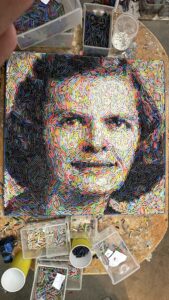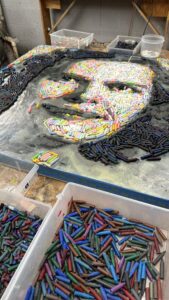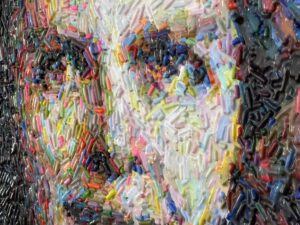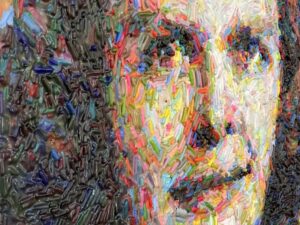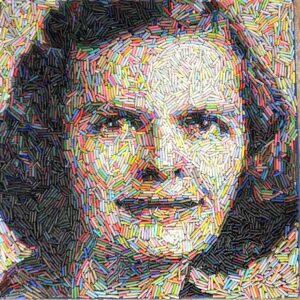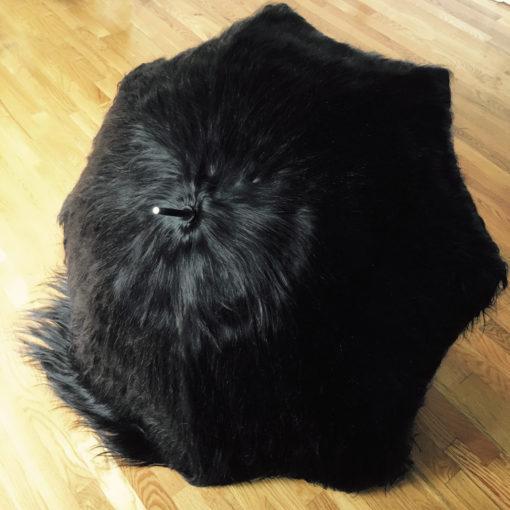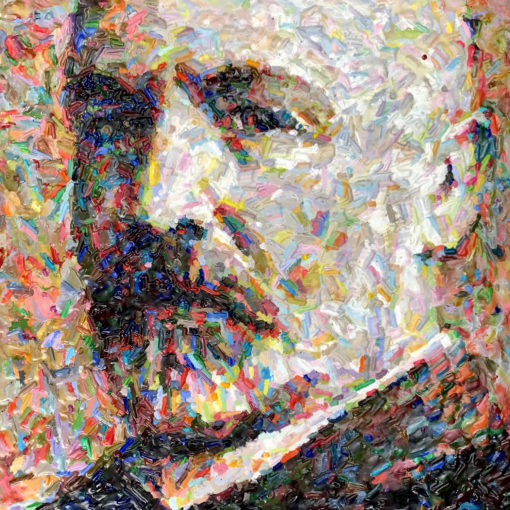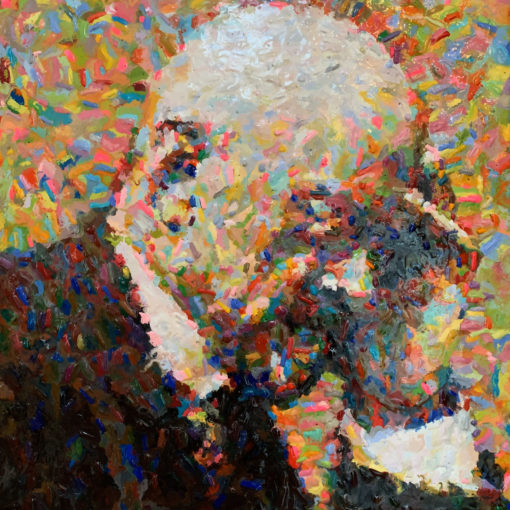Julia Robinson (Mathematician Series) –36×36”
Melted hand cast encaustic crayons
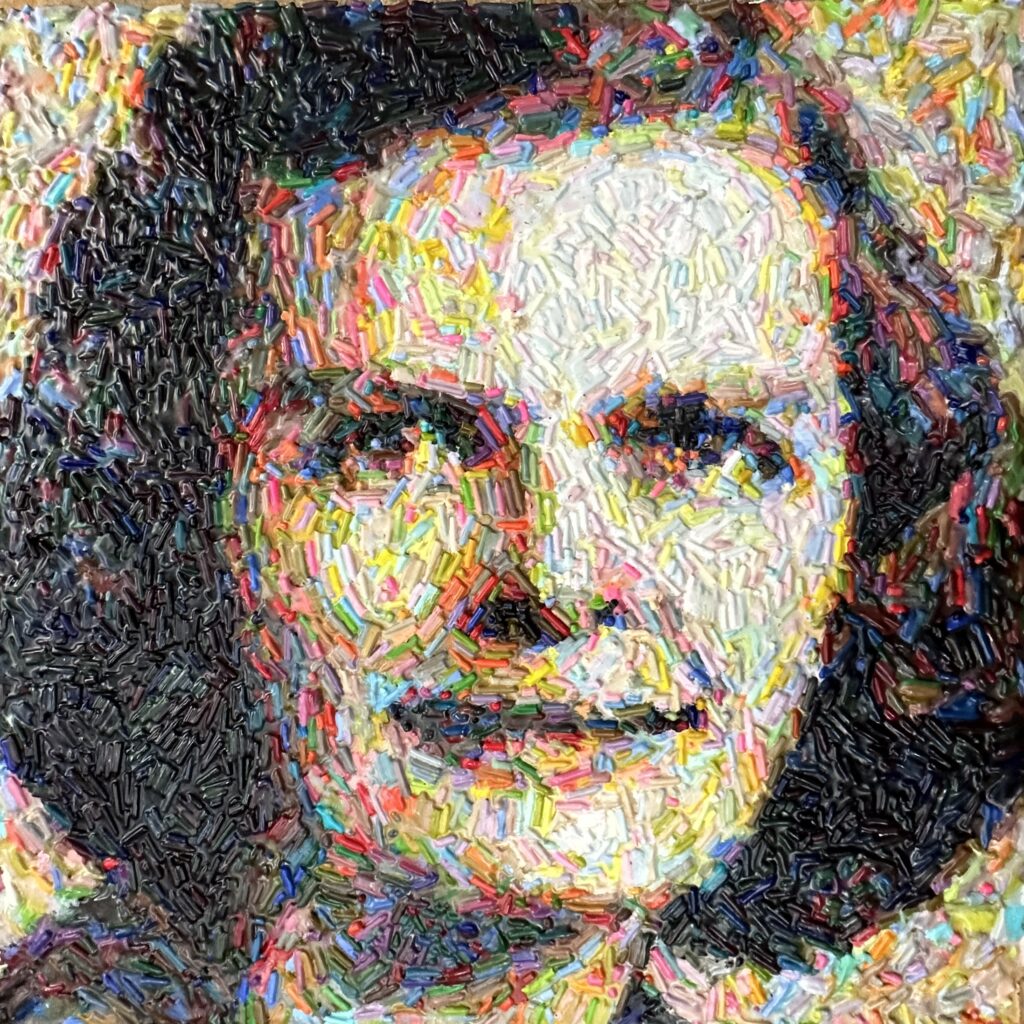
Julia Robinson (1919-1985) was born in St. Louis, Missouri to a father who ran a machine tool and equipment business and a schoolteacher mother. Due to scarlet and rheumatic fevers, she missed two years of school as a child and progressed through four grades in one year with a tutor. However, the diseases took a toll on her heart and would prevent her as an adult from taking on strenuous full-time teaching positions. She admitted that she had been a very stubborn child and that this trait is useful in the field of mathematics. Bedridden for so long with illness, she also learned patience as a child. Robinson went on to UC Berkeley for a master’s degree and Princeton for a PhD.
For a time, Julia and her husband, Raphael, wanted to start a family, but after miscarrying due to her impaired heart valve, she was advised to forget about having children. Raphael encouraged her to find solace in her math career instead. Like several other notable mathematicians of the twentieth century, she worked on game theory in the late 1940s at the RAND Corporation in Santa Monica. In 1951, she solved a prize problem posed by George Brown at RAND and wrote about it in the paper, “An Iterative Method of Solving a Game.”
While at RAND, she became captivated by Hilbert’s tenth problem. Of the 23 problems which David Hilbert proposed in 1900, some have been solved or partially solved, and some remain unsolved to this day. The tenth problem was an obsession for Robinson. She told her sister that she couldn’t bear to die before knowing the answer to it. Although Yuri Matiyasevich officially solved the problem in 1970, he gave much of the credit to Julia Robinson. After reading a paper she had published on it, he carried the problem the rest of the way over the “finish line.”
In the tenth problem, Hilbert wanted to know if there was an all-purpose algorithm to determine whether a certain Diophantine equation is solvable (or not) with an integer solution (whole numbers, positive or negative, and zero).
For example, x2 + y2 + 2 = 0 is a Diophantine equation (polynomial with integer coefficients and a finite number of unknowns) that has no integer solution.
What about x3 + y3 + z3 = 42? Not until 2019 was it determined using a supercomputer that this Diophantine equation does in fact have an integer solution. Largely based on Julia’s work, Yuri proved that no, there is no general algorithm that can determine if such an equation with such a solution is solvable or not.
In 1961, perennially short of breath, Robinson had open-heart surgery to remove some of the scar tissue around her heart valve. Afterward, she was so happy to have renewed energy that she became a cycling enthusiast. In 1975, she was elected to the National Academy of Sciences. Having overcome her heart issues, she was diagnosed with leukemia, which quickly led to her death in 1985. She was 65 years old. Julia’s sister, Constance Reid, wrote her autobiography for her while she was dying of leukemia and had much to do with making the documentary Julia Robinson and Hilbert’s Tenth Problem a reality.
